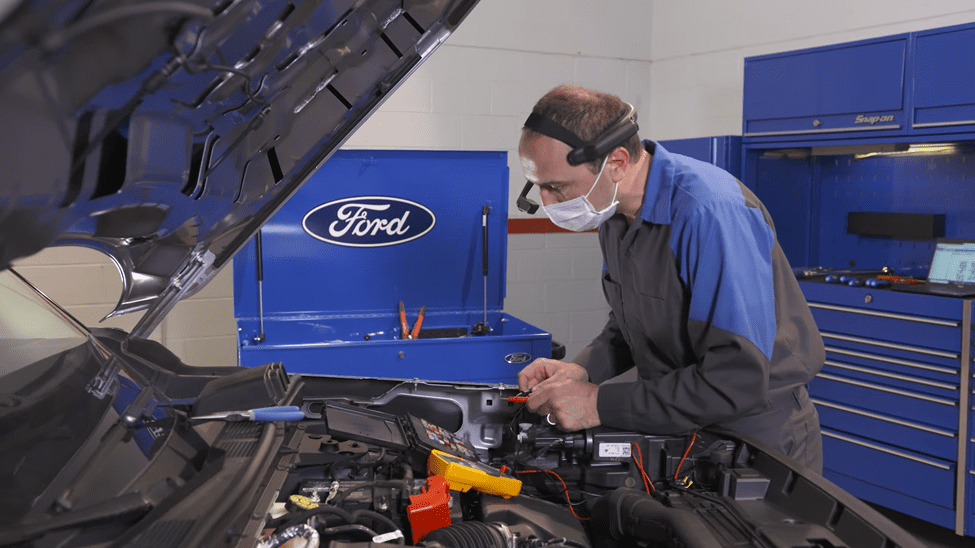AR Headsets Speed Auto Repair, Mechanic Training

An automotive technician needs help diagnosing a difficult problem on a vehicle. A student needs training but doesn’t want to incur the cost of travel. A mobile service technician needs to contact someone while changing a tire in the customer’s driveway.
Those are three use cases in which the “see what I see” (SWIS) capability of hands-free electronic headsets enhanced by augmented reality (AR) can save service providers time and money and improve their customer service.
“We had one case where a technician reported the vehicle would not recognize the low tire pressure sensors,” David Green, Ford general service equipment program specialist, said in a press release announcing Ford dealers’ adoption of SWIS headsets. “When the tech contacted the hotline using SWIS, they quickly found out they were using the wrong tool when the tech held it up in front of the camera. Once the right tool was used, everything was programmed just the way it should.”
Modernizing, Simplifying Operations
For that and other use cases, Ford is offering dealerships access to remote assistance technology that provides real-time visual and audio communication between technicians and the Ford technical assistance.
While the technology enables the help desk to see what the technician does, it also allows tech to see images displayed by the team.
For the team technical assistance center, this technology may cut down on travel hours. Currently, it receives about 5,000 calls a week looking for tech support, and about 200 of those can’t be diagnosed over the phone.
For the vehicle owners, the diagnostic assistance given to dealers via this technology means that the problem may be fixed in hours rather than days, so they can get back on the road quicker.
Ford said in the release that all U.S. dealers should have SWIS by November.
“The remote technology is designed to assist the technicians as they’re working on vehicles — with the goal of increasing efficiency and decreasing downtime for customers,” Green said in the release. “This technology modernizes and simplifies our operations, benefiting everyone involved.”
Beyond Training
Wearables with “see what I see” capabilities are being deployed with field service workers in many industries.
Beyond training, the technology can also be used to allow remote inspections of equipment, with the expert in an office and someone else who is on site using the wearables to share what they see; to enable onsite inspectors to keep a digital checklist with verbal commands as well as recording what they see; and to enable a technician to see a blueprint while working, Rama Oruganti, chief product officer at RealWear, told PYMNTS in December.
Read more: Pandemic Drives New Use Cases for Assisted Reality Wearables
“The big immediate use case for a lot of people in the real world is going to be in industry,” Oruganti said. “There are 100 million industrial frontline workers — the kind of people we are targeting — so we are trying to take the best in class of things that are applicable here without being distracting and without taking away their hands.”
With the addition of 5G connectivity to glass wearables, technicians, engineers, warehouse workers and other remote employees will be able to employ the low latency of 5G while continuing to work hands-free rather than having to hold a phone, T.J. Vitolo, who leads the XR (augmented and virtual reality) organization at Verizon, told PYMNTS in January.
See more: 5G Connectivity Expands the Capabilities of Glass Wearables
“Field workers, factory workers, whatever might be the case, that have limited experience in things outside their domain are now able to troubleshoot, diagnose and fix things through remote support — remote support that’s guided by a bit more than audiovisual feedback, but with some additional tools that help for a better collaborative experience versus just a communication experience,” Vitolo said.
